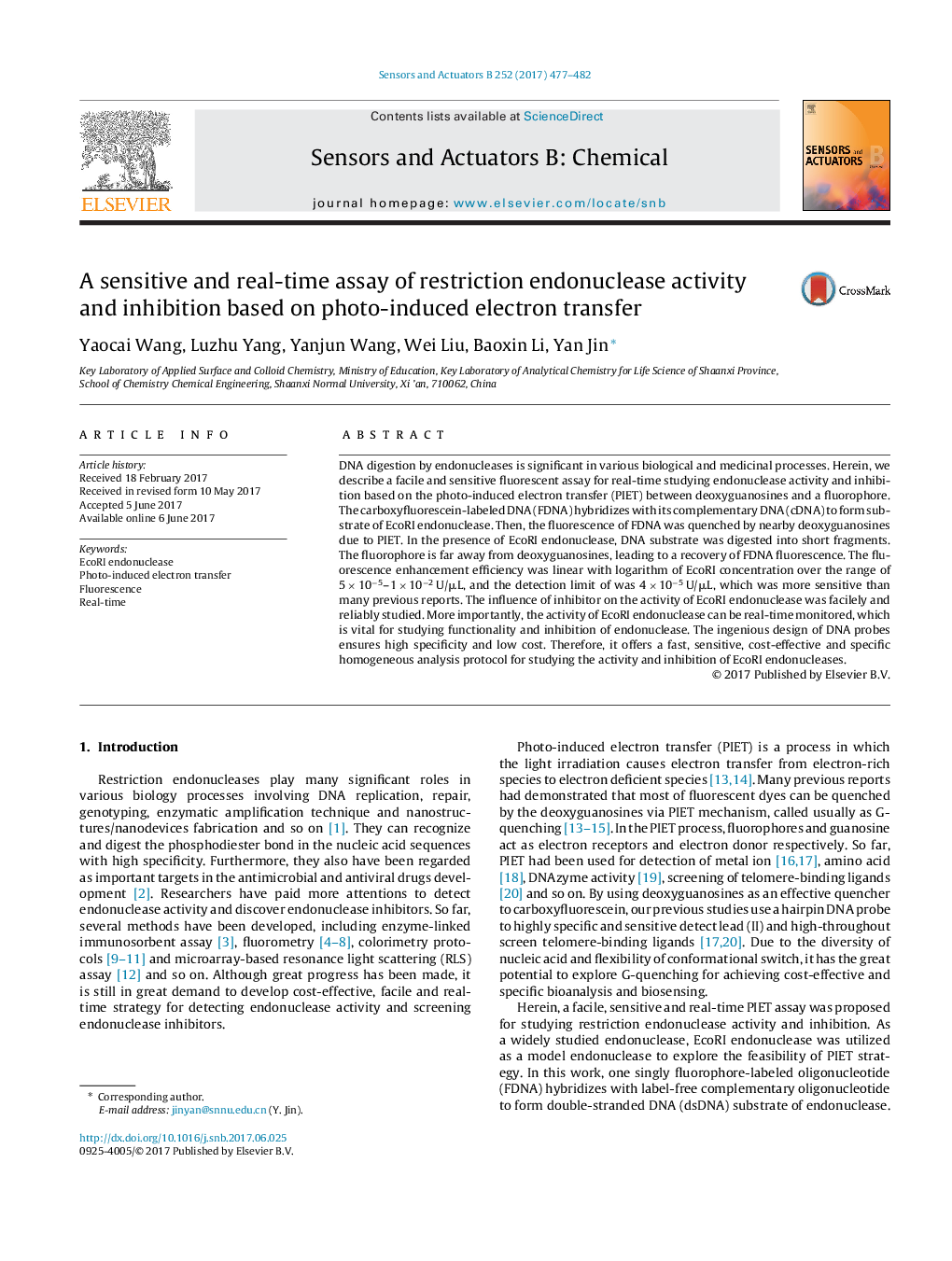| Article ID | Journal | Published Year | Pages | File Type |
|---|---|---|---|---|
| 5009098 | Sensors and Actuators B: Chemical | 2017 | 6 Pages |
â¢A PIET strategy first proposed to study activity and inhibition of EcoRI endonuclease.â¢The real-time monitoring of enzymatic cleavage was facilely achieved.â¢G-quenching led to a specific and cost-effective assay.
DNA digestion by endonucleases is significant in various biological and medicinal processes. Herein, we describe a facile and sensitive fluorescent assay for real-time studying endonuclease activity and inhibition based on the photo-induced electron transfer (PIET) between deoxyguanosines and a fluorophore. The carboxyfluorescein-labeled DNA (FDNA) hybridizes with its complementary DNA (cDNA) to form substrate of EcoRI endonuclease. Then, the fluorescence of FDNA was quenched by nearby deoxyguanosines due to PIET. In the presence of EcoRI endonuclease, DNA substrate was digested into short fragments. The fluorophore is far away from deoxyguanosines, leading to a recovery of FDNA fluorescence. The fluorescence enhancement efficiency was linear with logarithm of EcoRI concentration over the range of 5 Ã 10â5-1 Ã 10â2 U/μL, and the detection limit of was 4 Ã 10â5 U/μL, which was more sensitive than many previous reports. The influence of inhibitor on the activity of EcoRI endonuclease was facilely and reliably studied. More importantly, the activity of EcoRI endonuclease can be real-time monitored, which is vital for studying functionality and inhibition of endonuclease. The ingenious design of DNA probes ensures high specificity and low cost. Therefore, it offers a fast, sensitive, cost-effective and specific homogeneous analysis protocol for studying the activity and inhibition of EcoRI endonucleases.
